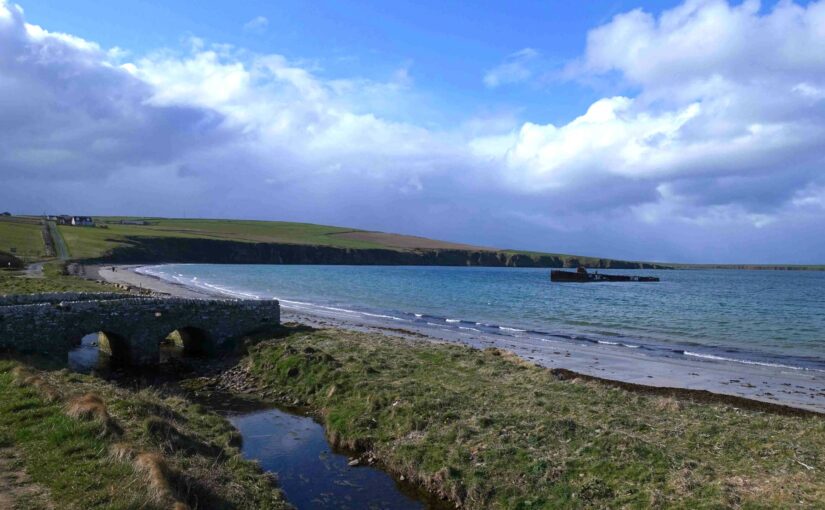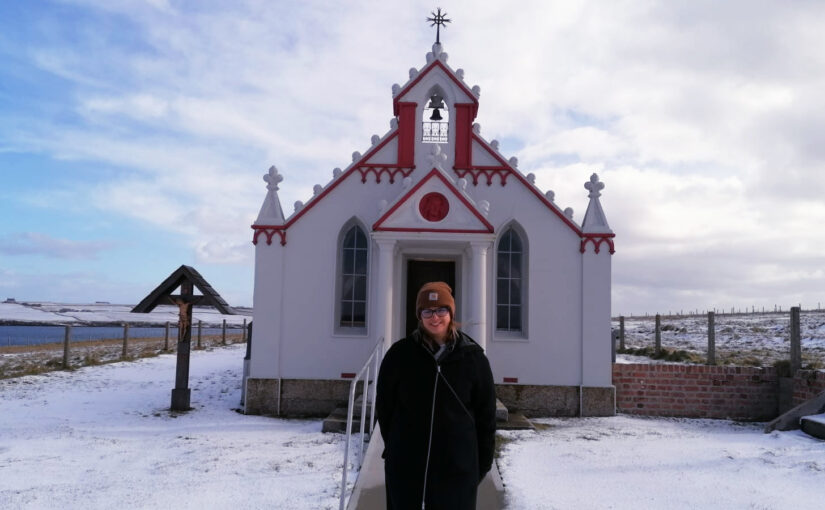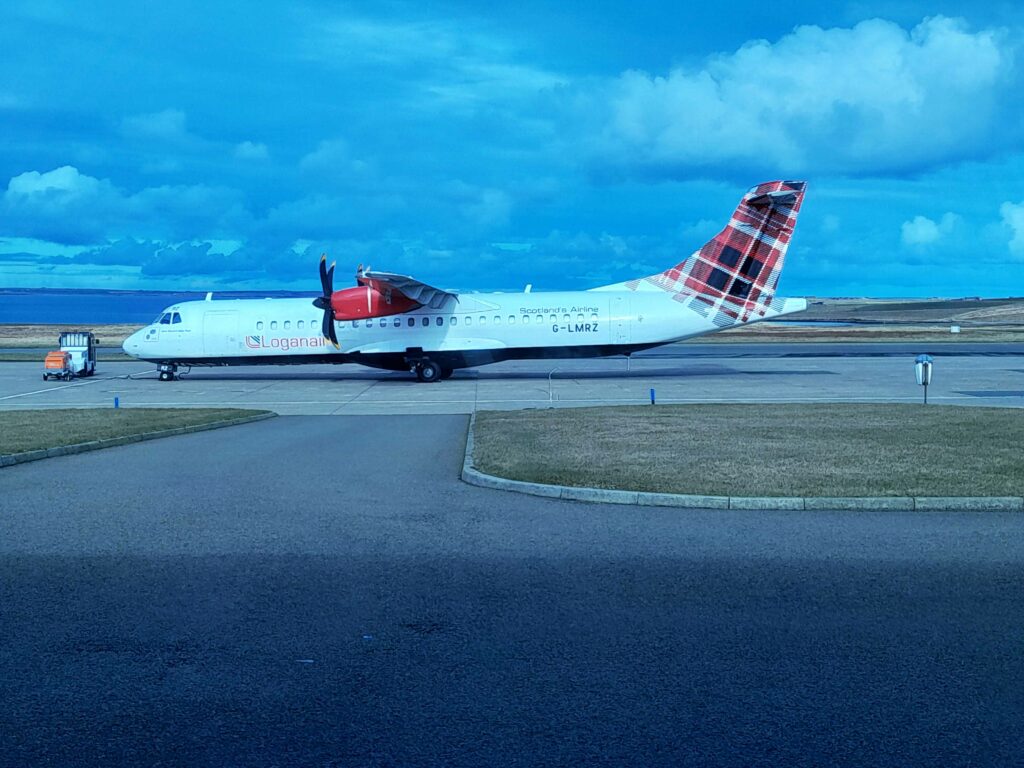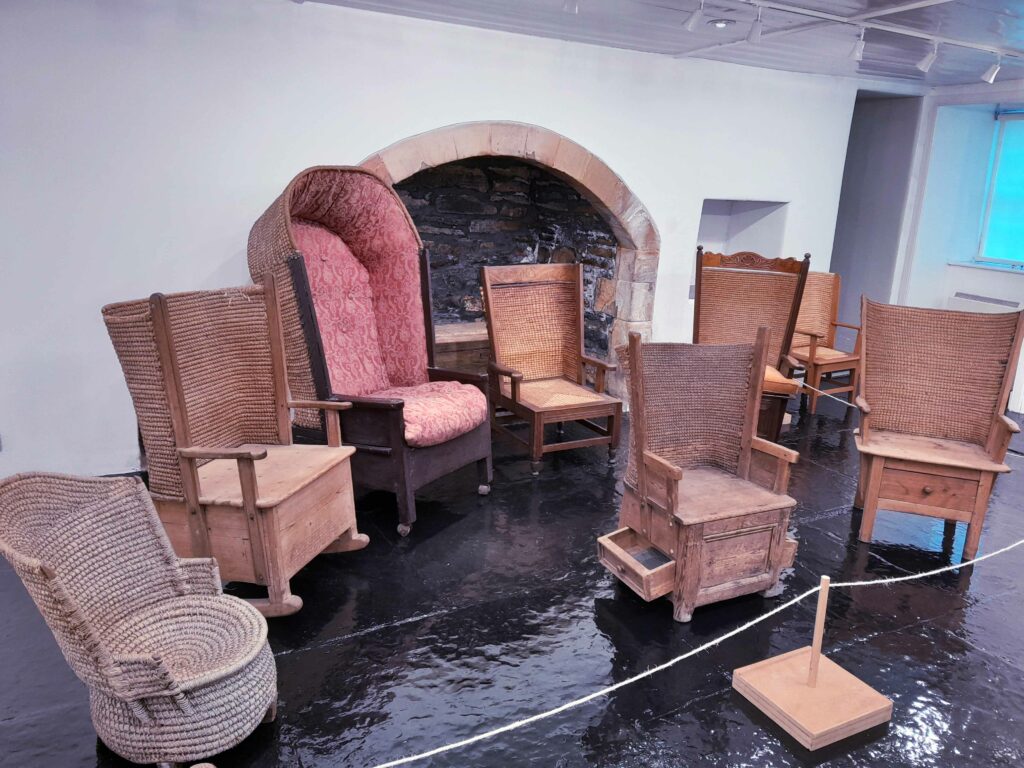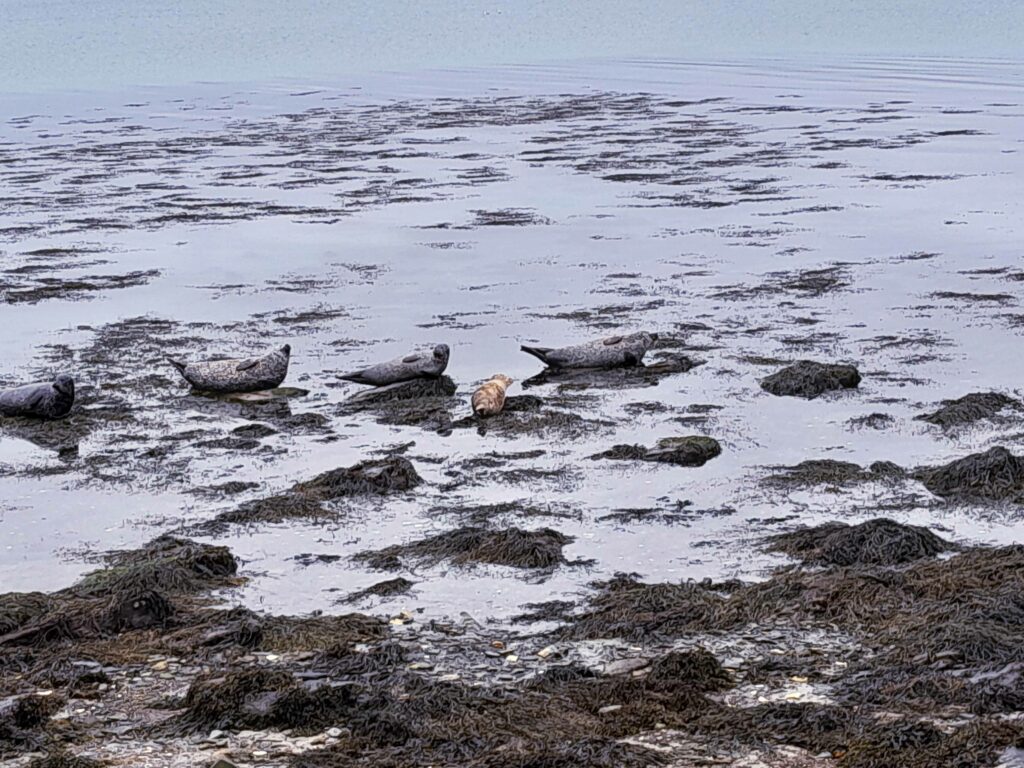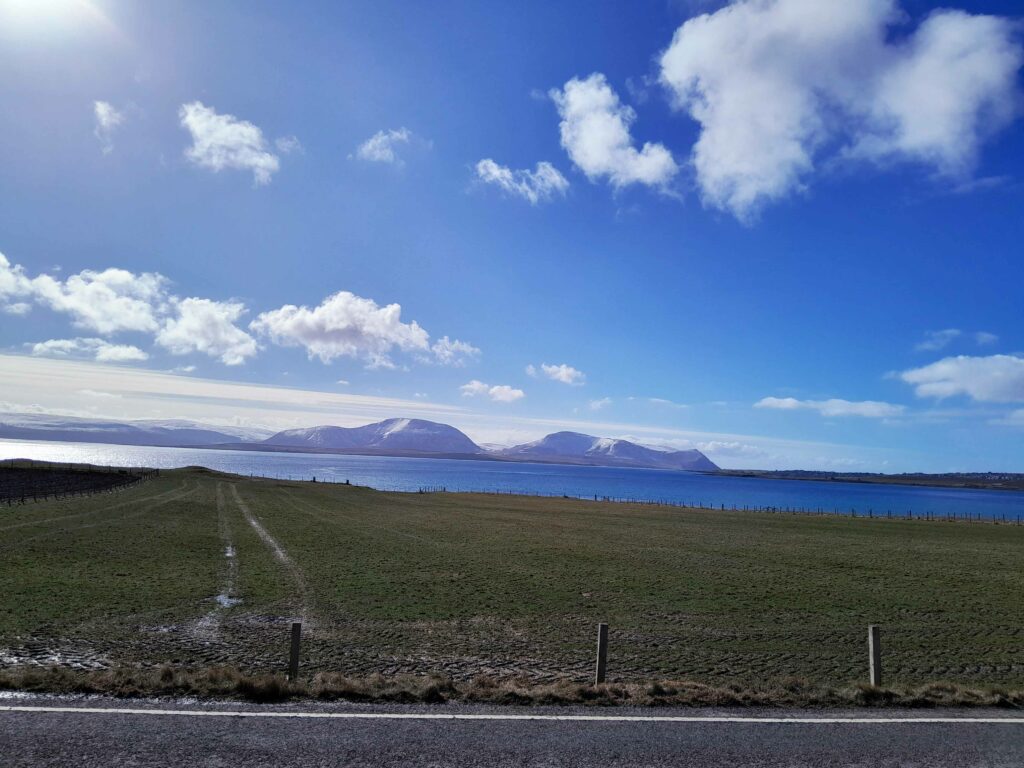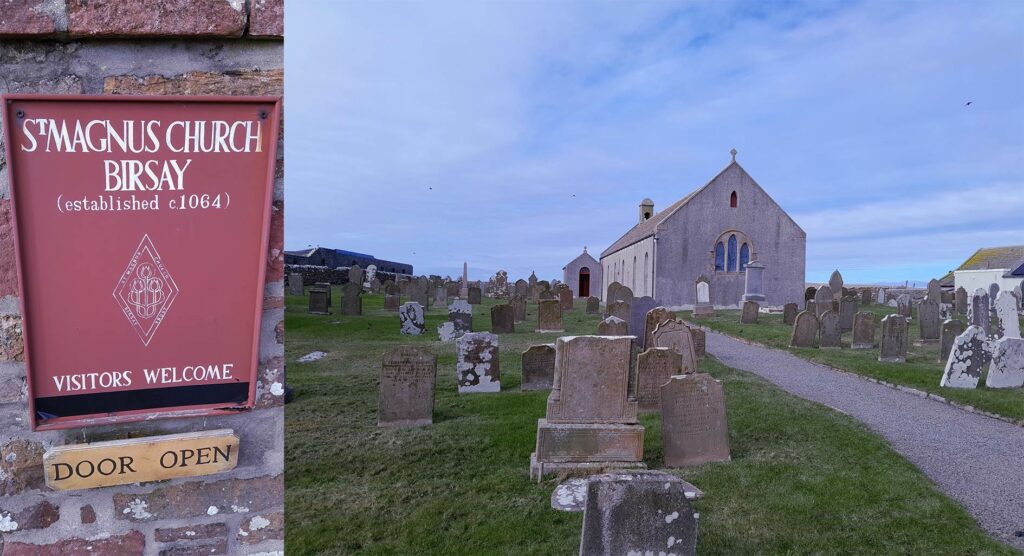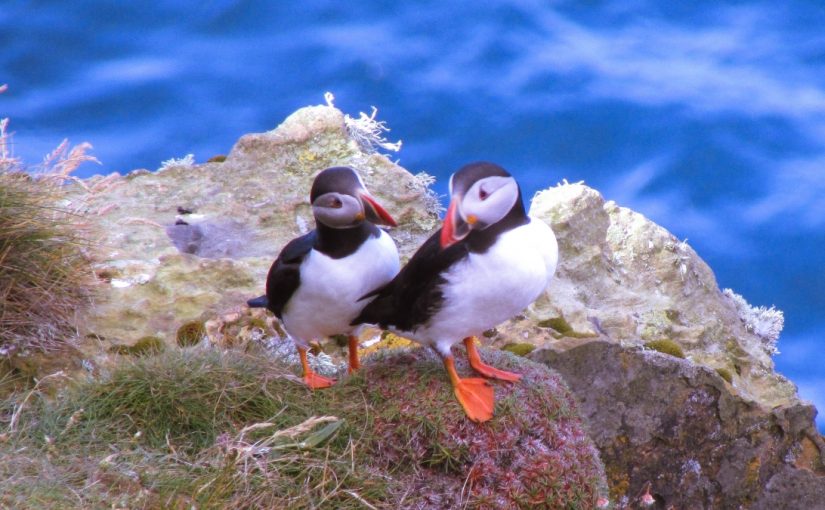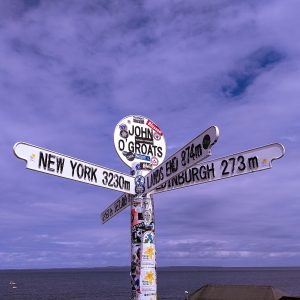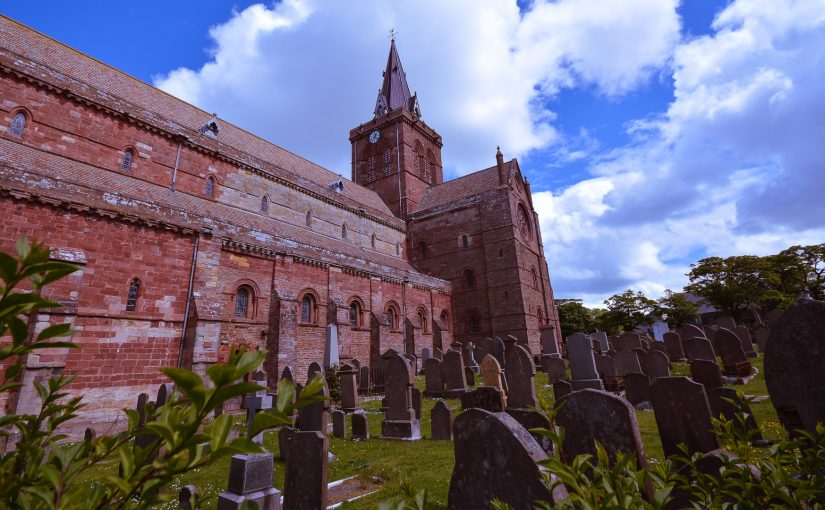Although the April morning started with a very beautiful display of heavy snow, by the time I had finished my breakfast—at the locally owned B&B in the heart of Kirkwall—it was a sunny day once again. My hostess let me know that the weather in Orkney never stays the same: there could be snow or very heavy rain, but 5-10 minutes later the sun will come out and grace the beautiful islands once again.
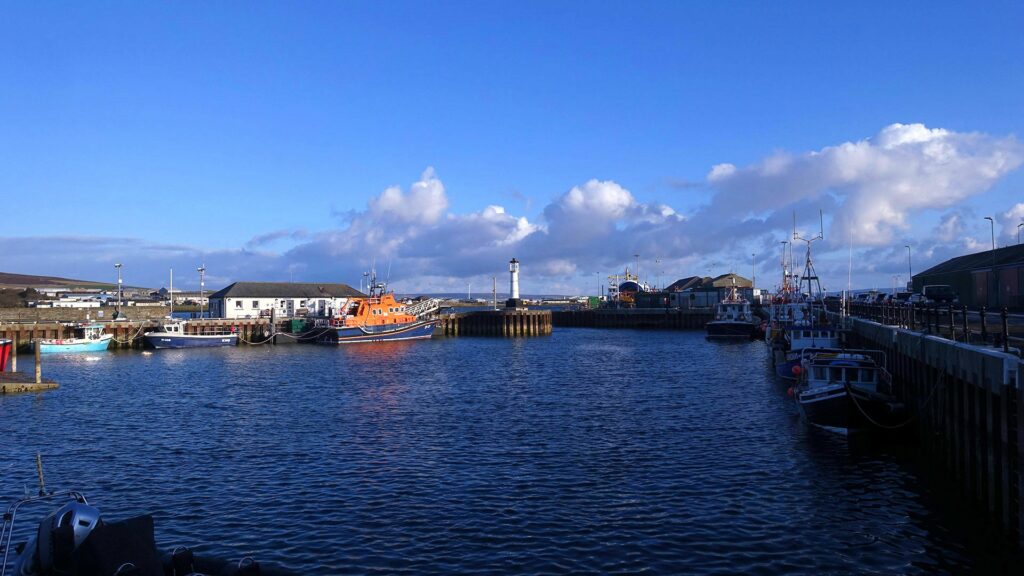
After my morning breakfast, I set out with a local guide to see key areas of Mainland Orkney. The Orcadian accent can be tricky at the best of times to understand (get 2 or 3 in a room together and you might not understand a word!) but thankfully she had her “posh” accent on. I was grateful for this as she had many interesting facts at each site and along the way – the kinds of stories and insights you only hear from a local. I only wish I could’ve written all of them down!
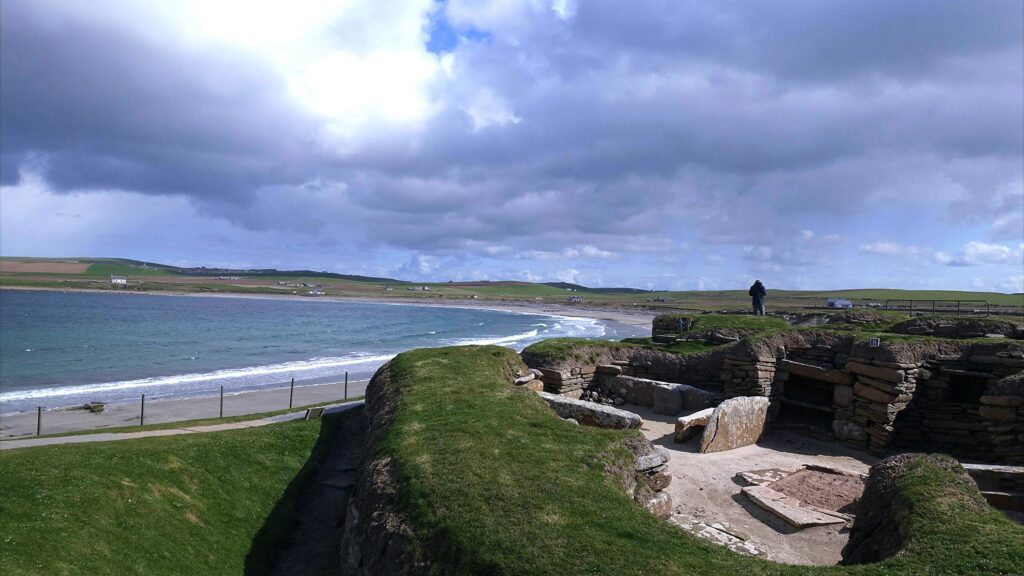
The weather was a bit chilly as I got into her car to start the explorations, but overall the weather is very mild in Orkney – averaging 5 degrees Celsius in winter and 15 degrees Celsius in Summer – not a place of extremes. The first stop was Skara Brae, a prehistoric village on the west of the mainland first uncovered in the 1800s by a storm. The site is still intact and has great preservation, due to this it has often been called the “Scottish Pompeii”. There are 10 houses in total which you can walk around and look down into from above. You can see all the very ‘comfortable’ looking stone beds, and maybe one or two birds hiding from the harsh winds.
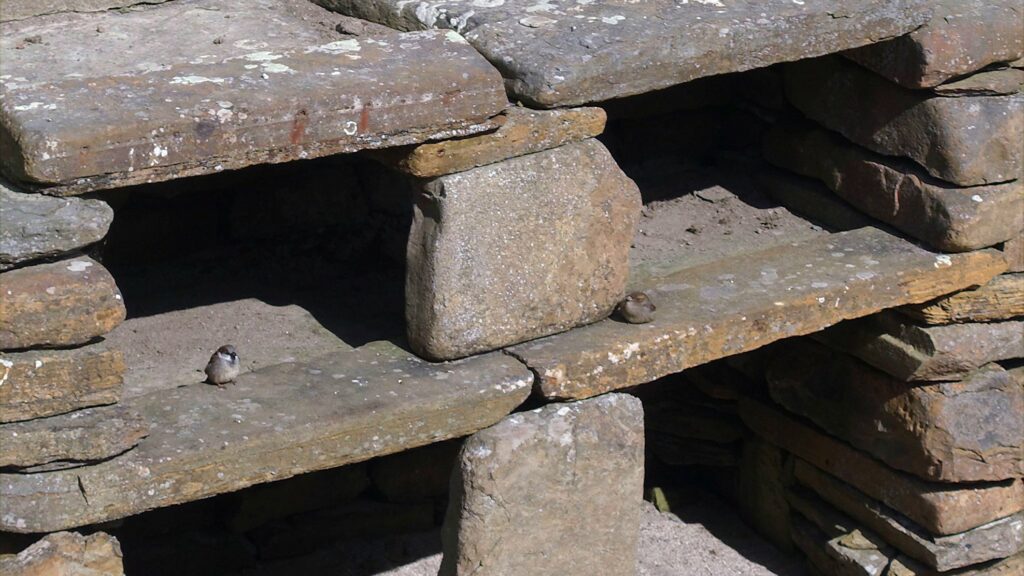
Due to preservation of the site, you cannot walk around inside the remains of these buildings anymore like you used to. Although at the site they do have a replica house – thankfully they made the ceilings higher to accommodate visitors as the originals were more suited to shorter people. The site is around 5000 years old, older than both Stonehenge and the pyramids, but still the houses had an indoor toilet and a primitive sewer system.
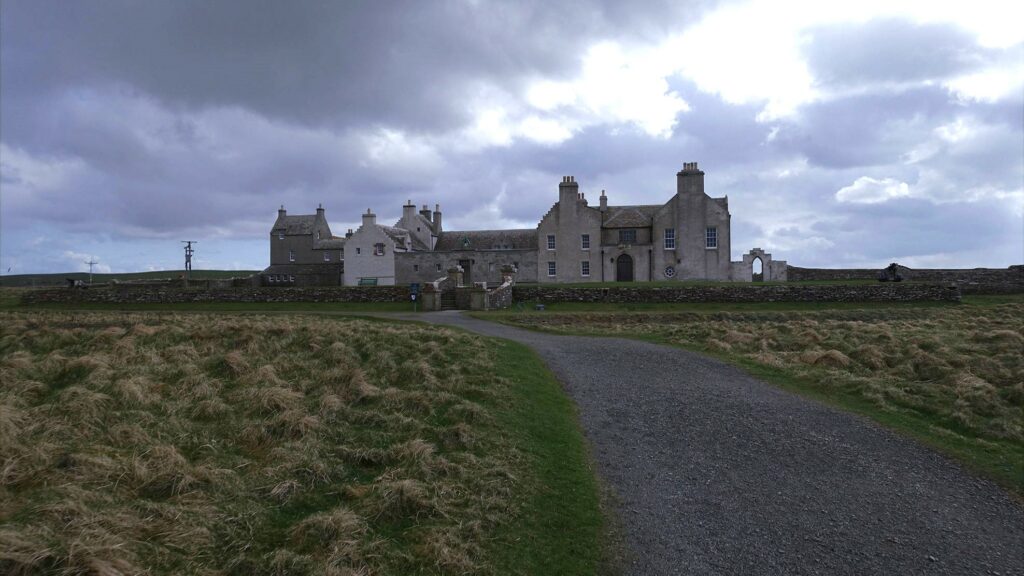
We said farewell to Skara Brae as the weather was about to change – Orcadians can tell what the weather will be from looking out to sea at the clouds and ocean. It was just a hop skip and a jump, however, to the next location of Skaill House, which was lucky as my guide’s weather skills did not fail and rain clouds promptly enveloped the area.
The view is incredible as it overlooks Skara brae, which would’ve bumped up the value of the manor when it was discovered. The land was given to the Bishop who built a house after the previous owner was executed for treason. There is a bit of eeriness about the house, especially in the hallway, as this part was built over the sight of an old pre-Viking burial ground. Ghost stories are very prominent at this old manor, with the present laird swearing that late at night he has heard a thump thump thump of footsteps on the old wooden staircase, causing his dog to bark in fear. But upon inspection no one was in sight. This happened many times, causing the dog to hide under the bed terrified each time. These disturbances have been attributed to ‘Ubby’, a local who built an island out in Skaill Loch by rowing his boat out and dropping stones. One night when he went out on his small row boat to add more stones to his growing island, the weather changed, resulting in him being drowned. It is said the ghost of Ubby now haunts his chosen resting place of Skaill House.
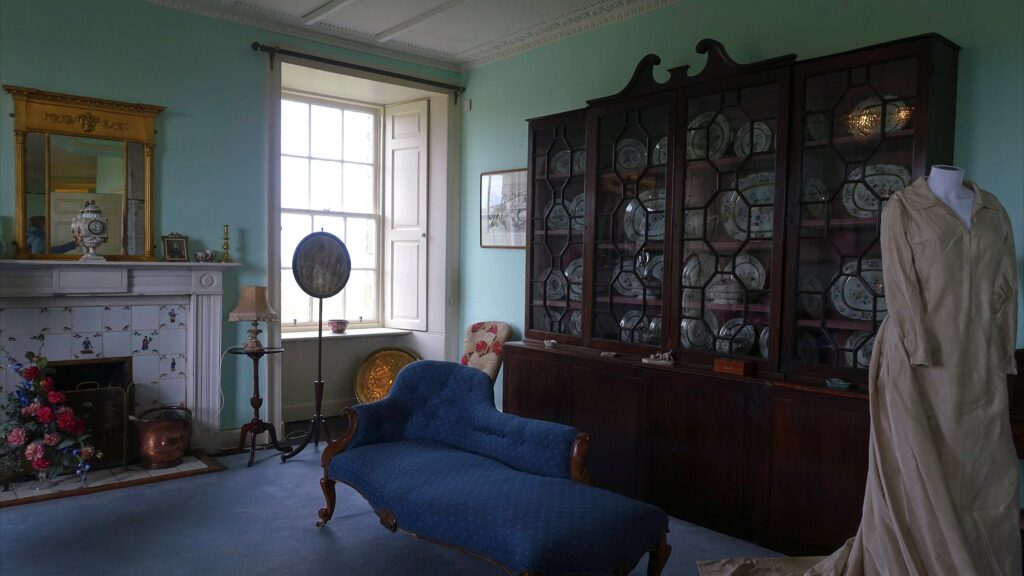
After the chills had left my spine from the ghost stories, we went on the road once again for some more Neolithic sites. A wonderful characteristic of Orkney is the amount of Neolithic sites there are. Even on the way from one major Neolithic site to another, you could see standing stones along the road side and archaeological sites still being worked on. We arrived at the site of the Ring of Brodgar to walk around the outer ring of stones, placed around 4000 years ago. There were 60 stones originally placed, with around 30 still standing today. If you’re lucky and the area isn’t muddy, you can walk around the inner ring to get closer to the stones.
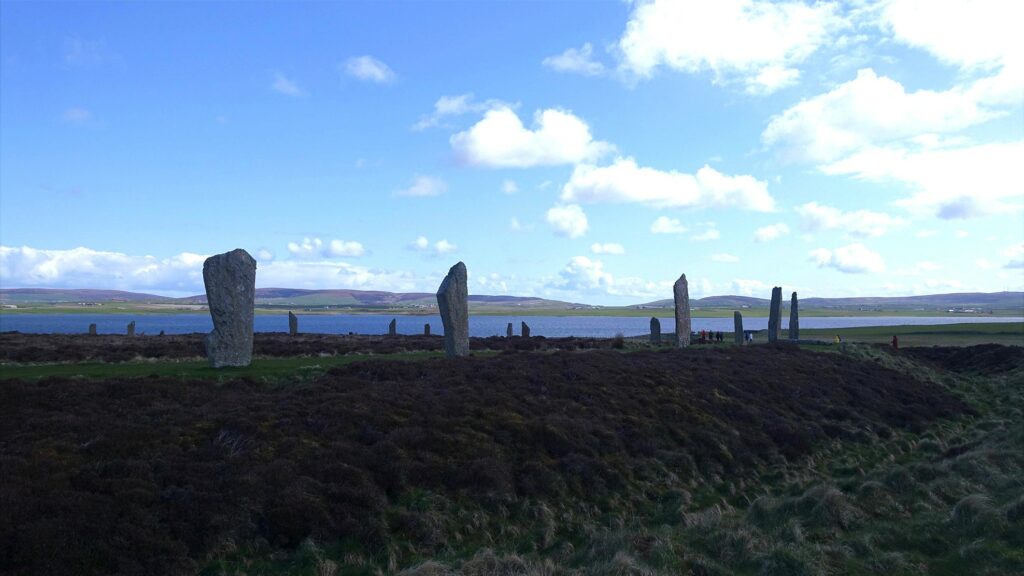
Something that my local guide made clear at all the Neolithic sites we saw is that it is still largely unknown why and how these were built, with it still being a contemporary area of study for Orkney archaeologists, with discoveries still being made to this day. The Ring of Brodgar is thought to be an area where ceremonies took place, between the living and past communities, to communicate with ancestors. The stones all come from different parts of the island, with different communities bringing them together – possibly symbolising the different people that created the stone circle, or it could’ve even been a competition to outdo other communities for the largest and heaviest stone.
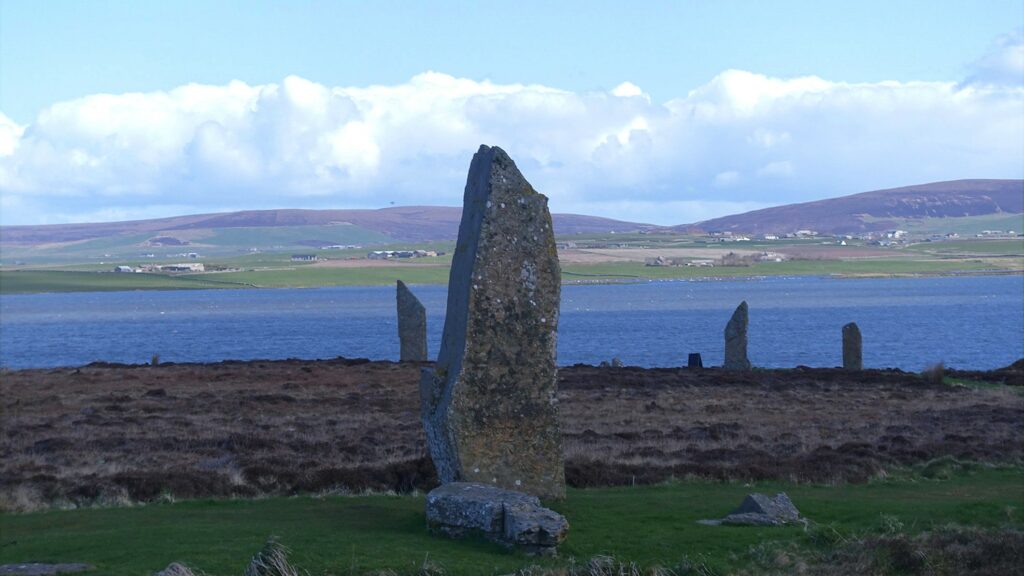
The image above shows one of the stones that was struck by lightning in 1980, causing a piece of the stone to split and fall beside. The stone still stands, mirroring the resilience of the Orkney ancestors living in such harsh conditions but still building a community that thrives.
Around a 5-minute walk from the Ring of Brodgar are the Standing Stones of Stenness, Originally a collection of 12 stones placed around 5000 years ago, only a few remain now. The stones stand 5 metres tall, towering over the stones used for the Ring of Brodgar in comparison. These stones are showered in myths, one being that at exactly midnight on New Years eve, one of the stones called “The Watchman” leaves its place to take a dip in the Stenness Loch for a wee drink. With how fresh the water of Orkney is, I cannot blame them.
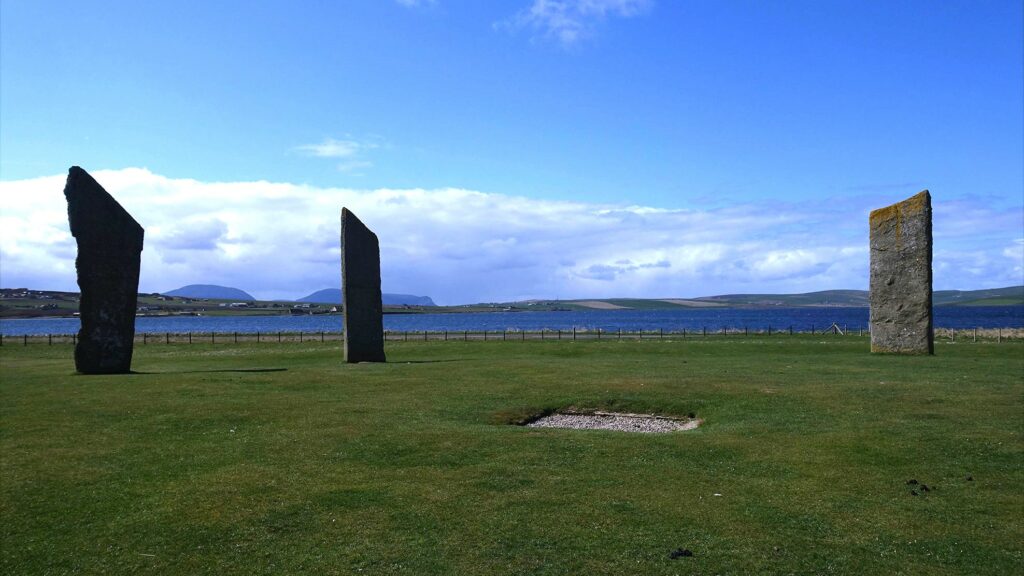
Standing next to one you wonder how they managed to complete such a task so long ago, and why they would do this. Many think the site was used in ceremonies. The Victorians believed that it was used as a beheading site – my guide told me they loved to believe that anyone that came before them were barbarians and very uncivilised. So much so that the Victorians even altered some stones to replicate a place for the beheading to take place.
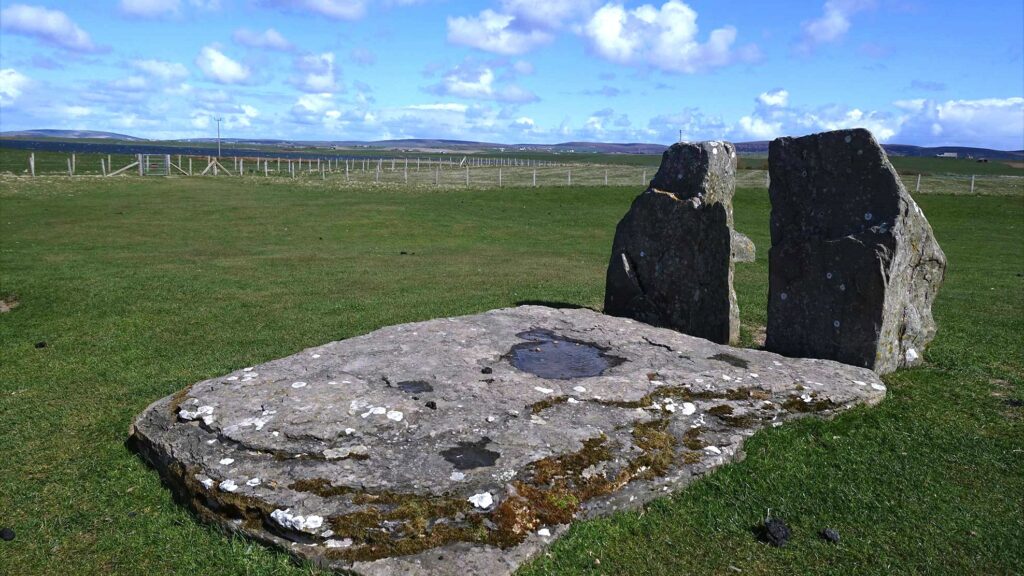
In some ways it’s very lucky that these stones still stand today – a farmer in the early 1800s was annoyed at having to plough around them, so he began to demolish them, incidentally he was not a native Orcadian. He managed to topple and destroy some of the stones before there was public outcry and attempts to burn down his house. However any court action was dropped when he agreed to leave the stones alone. If you look closely at one of the stones, there is a hole where a stick of dynamite was placed but never set off, thankfully.
Waving goodbye to the Neolithic stones, we then drove onto a far more modern point of local History, the Italian Chapel. On our way, we saw a horse in a field and a rather large pony with a mask on. My guide explained that the pony was there to give company to the horse, and it was wearing a mask because it was too greedy. Some ponies will just constantly eat and make themselves ill.
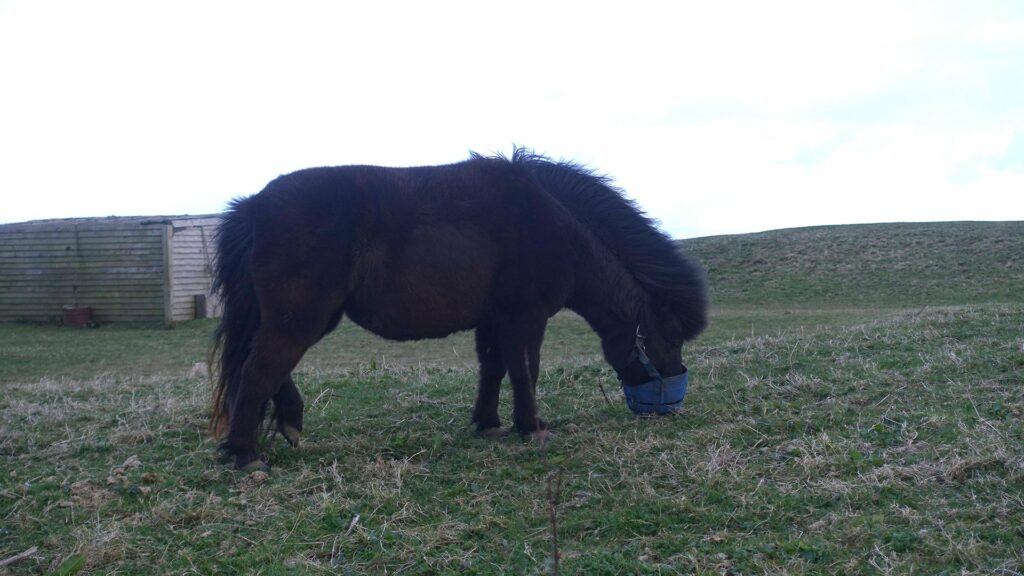
Photos don’t do the Italian Chapel justice, you must visit it yourself and learn about the history and see what those that built it managed to accomplish with such little resources. It was built by Italian Prisoners of war during World War 2 for a permanent place to worship. They were given no material to work with, all they could use were recycled materials.
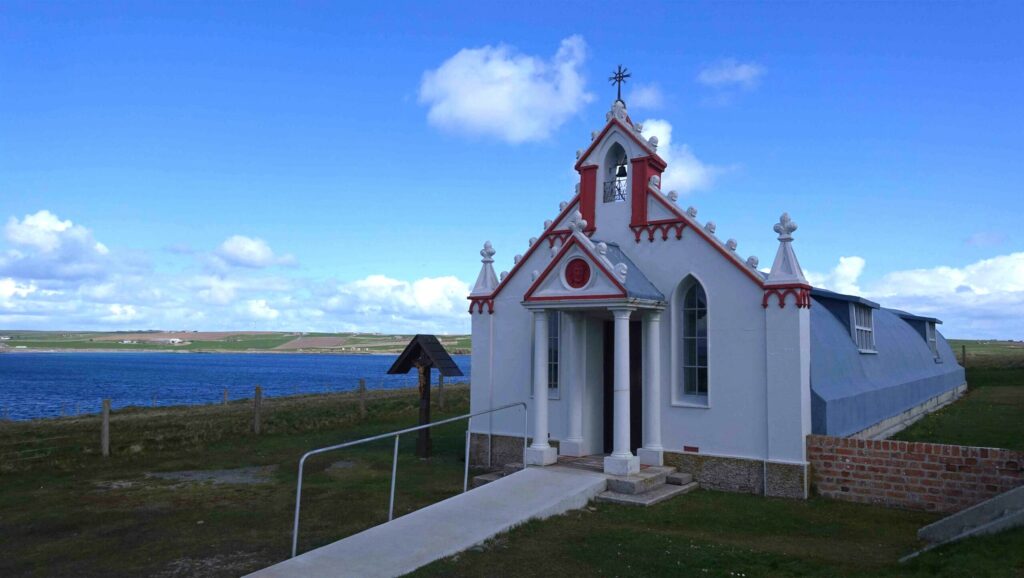
Every detail inside, such as the stone walls, were very carefully painted to make them look 3D, it’s something you have to see to believe. One of the prisoners said it was created to show that even when trapped in a barbed wire camp, down in spirit and moral, that one can still find something inside that could be set free.
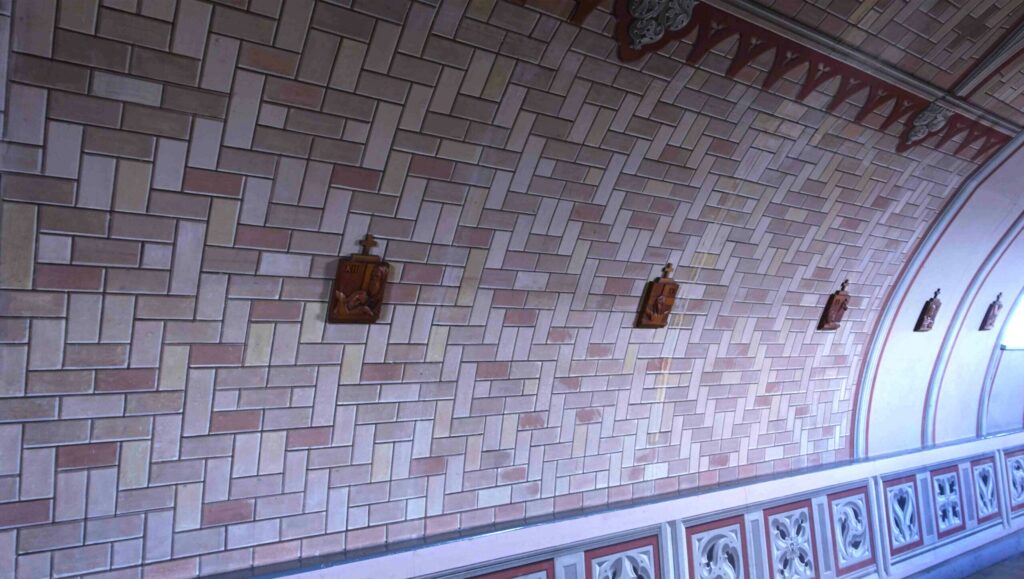
The art centrepiece of the chapel, was painted by a prisoner called Domenico Chiocchetti who was an artist before the war. It was based on a picture given to him by his mum that he carried throughout the war, of the Madonna and Child who holds the olive branch of peace.
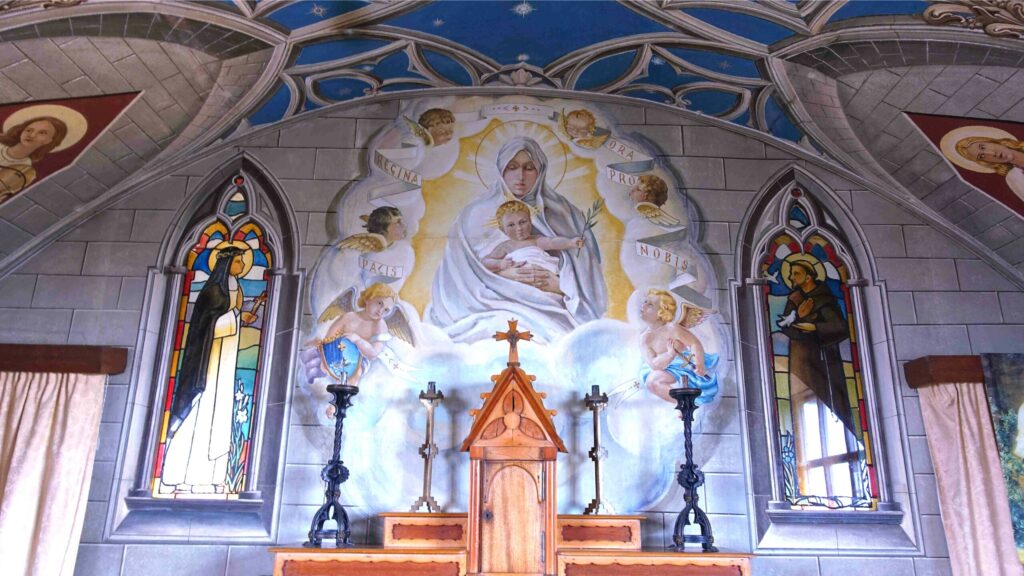
As you leave the Italian Chapel there is a statue of St George slaying a dragon. Remarkably this is made from barbed wire and concrete. The statue represents good triumphing over evil.
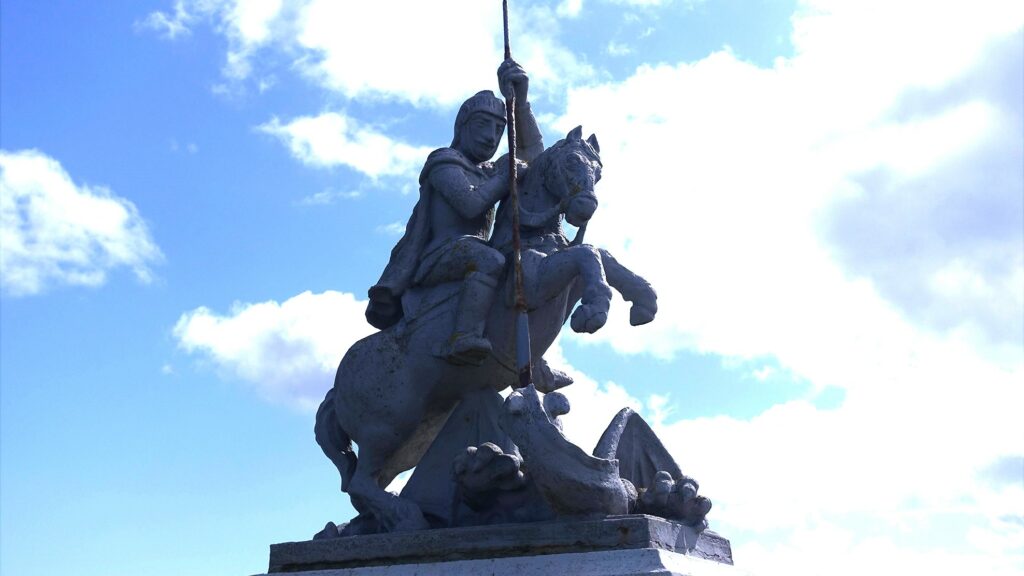
I enjoyed my day experiencing the main sites of Orkney through the eyes of a local, they brought it to life with their lesser-known stories and insights. There is still much more I wish to see and do in Orkney, with the rocky landscape of Hoy calling my name the loudest.
Words & Images by Jonathan @ McKinlay Kidd
McKinlay Kidd offer a number of holidays to Orkney, including self-drive, public transport and small group guided tours.
If you’re interested in a guided experience, why not book a space on our North Highlands and Orkney Guided Rail Tour? If you’d prefer to travel self-guided and car-free, we have options including our Far North Line to Orkney trip. Do let us know if you’d like to include Orkney as part of a tailor-made Scotland tour. Visit our website for more holiday inspiration.

